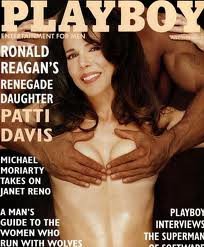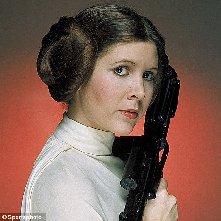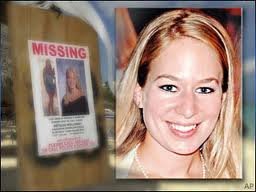Golf is a club-and-ball sport in which players use various clubs to hit balls into a series of holes on a course in as few strokes as possible.
Golf, unlike most ball games, cannot and does not utilize a standardized playing area, and coping with the varied terrains encountered on different courses is a key part of the game.
While the modern game of golf originated in 15th-century Scotland, the game's ancient origins are unclear and much debated. The game did not find international popularity until the late 19th century, when it spread into the rest of the United Kingdom and then to the British Empire and the United States.
Some historians trace the sport back to the Roman game of paganica, in which participants used a bent stick to hit a stuffed leather ball. One theory asserts that paganica spread throughout Europe as the Romans conquered most of the continent, during the first century BC, and eventually evolved into the modern game.
In December 1650, the settlers of Fort Orange (near present-day Albany, New York) played the first recorded round of kolf (golf) in America. The Dutch settlers played kolf year round. During the spring, summer and fall it was played in fields. In the winter it was played on ice with the same rules. Then on December 10, 1659, the ruler passed an ordinance against playing golf in the streets of the same city.
The modern game of golf is generally considered to be a Scottish invention. A spokesman for The Royal and Ancient Golf Club of St Andrews
, one of the oldest Scottish golf organisations, said "Stick and ball games have been around for many centuries, but golf as we know it today, played over 18 holes, clearly originated in Scotland." The word golf, or in Scots gowf [gʌuf], is usually thought to be a Scots alteration of Dutch "colf" or "colve" meaning "stick, "club", "bat", itself related to the Proto-Germanic language *kulth- as found in Old Norse kolfr meaning "bell clapper", and the German Kolben meaning "mace or club". The Dutch term Kolven refers to a related sport where the lowest number of strokes needed to hit a ball with a mallet into a hole determines the winner; according to the "Le grand dictionnaire françois-flamen" printed 1643 is stated the Dutch term to Flemish: "Kolf, zest Kolve; Kolfdrager, Sergeant; Kolf, Kolp, Goulfe."
The first documented mention of golf in Scotland appears in a 1457 Act of the Scottish Parliament, an edict issued by King James II of Scotland prohibiting the playing of the games of gowf and futball as these were a distraction from archery practice for military purposes. Bans were again imposed in Acts of 1471 and 1491, with golf being described as "an unprofitable sport". Golf was banned again by parliament under King James IV of Scotland, but golf clubs and balls were bought for him in 1502 when he was visiting Perth, and on subsequent occasions when he was in St Andrews and Edinburgh.
Mary, Queen of Scots played, and she was accused of playing "pell-mell and golf" at Seton Palace after her husband Lord Darnley was murdered in 1567, when she ought to have been in solemn mourning. George Buchanan wrote that she had been following her "usual amusements in the adjoining fields that were plainly not adapted to women".
Evidence of early golf in what is now the United States includes a 1739 record for a shipment of golf equipment to a William Wallace in Charleston, South Carolina, an advertisement published in the Royal Gazette of New York City in 1779 for golf clubs and balls, and the establishment of the South Carolina Golf Club in 1787 in Charleston. However, as in England, it was not until the late 19th century that golf started to become firmly established.
During the Roaring Twenties the game expanded greatly in popularity and by 1932 there were over 1,100 golf clubs affiliated to the USGA. In 1922 Walter Hagen became the first native born American to win the British Open Championship. The expansion of the game was halted by the Great Depression and World War II, but continued in the post war years. By 1980 there were over 5,908 USGA affiliated clubs. That figure grew to over 10,600 by 2013. Starting in the 1920s, and growing through the 1990s, many residential golf course communities have been built.
https://en.wikipedia.org/wiki/Arnold_Palmer
Get out your chopsticks and get ready to enjoy this easy recipe for Kung Pao Beef! Why call for take-out when we can create this classic Asian dish ourselves and save time and money?
- 1/2 cup teriyaki sauce
- 2 tablespoons cornstarch
- 1 teaspoon crushed red pepper
- 1/2 teaspoon ground ginger
- 2 pounds flank steak, thinly sliced
- 1 tablespoon vegetable oil
- 2/3 cup salted peanuts
- 4 scallions (green onions), thinly sliced
- In a large bowl, combine teriyaki sauce, cornstarch, crushed red pepper, and ginger. Add steak and toss to coat.
- In a large skillet or wok, heat oil over high heat. Add steak mixture and cook 5 to 7 minutes, or until steak is cooked through, stirring constantly.
- Sprinkle with peanuts and scallions, and serve.

1986 – Natalee Holloway, American missing person (missing since 2005) What a long story and still never found!
Each year on October 21st, National Pumpkin Cheesecake Day ushers in the flavors of fall. Cheesecake is one of America’s favorite desserts and by adding pumpkin, we celebrate the essential flavoring of the season.
This sweet dessert mixes fresh soft cheese, cream cheese or cottage cheese, eggs, and sugar to create a base. The crust is made from crushed graham crackers, crushed cookies, pastry, or sponge cake. Pumpkin may be added to cheesecake recipes in various ways. For example, it may be swirled throughout, mixed thoroughly with all ingredients, or layered. Bakers prepare cheesecakes both baked or unbaked. Some bakers flavor cheesecakes and top them with fruit, fruit sauce, chocolate, or whipped cream.
An ancient form of cheesecake may have been a popular dish in ancient Greece. The earliest attested mention of cheesecake is by the Greek physician, Aegimus. He wrote a book on the art of making cheesecakes.
James Kraft developed a form of pasteurized cream cheese in 1912. In 1928, Kraft acquired the Philadelphia trademark and marketed pasteurized Philadelphia Cream Cheese.
North America has several different styles of cheesecakes:
- New York-style cheesecake
- Pennsylvania Dutch-style cheesecake
- Philadelphia-style
- Farmer cheese cheesecake
- Country-style cheesecake
- Lactose-free cheesecake
- Cheesecake Kludys
- Chicago Style Cheesecake
- Savory cheesecake
Try one of the following recipes to celebrate:
Double Layer Pumpkin Cheesecake
Pumpkin Cheesecake Bars
Chocolate Pumpkin Cheesecake Bars
Caramel Pecan Pumpkin Cheesecake Bites
Pumpkin Cheesecake
















